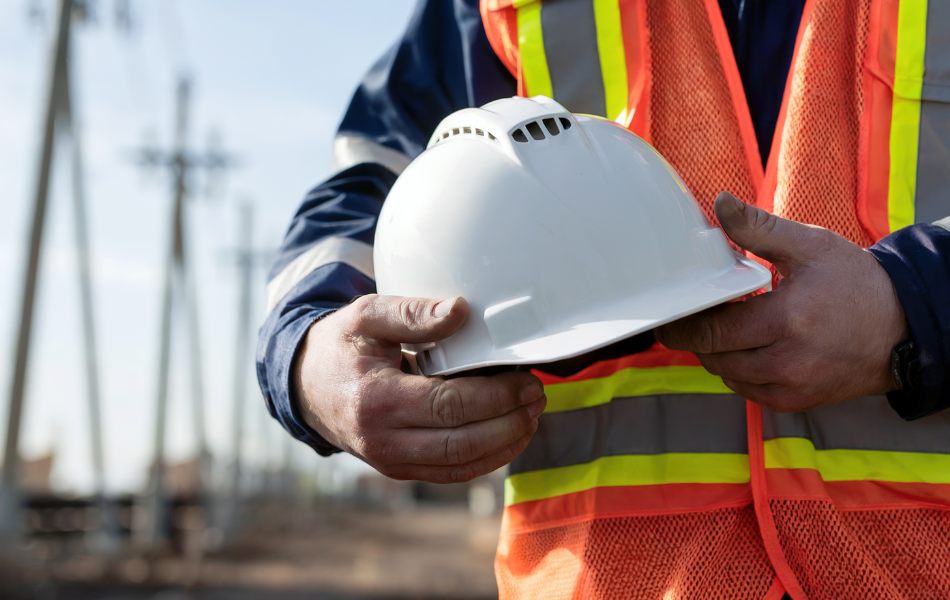Building Safety Act 2022 – Lessons from Early Adopters
The Building Safety Act was published on 28th April 2022. It introduces new roles and responsibilities for people who manage occupied, high-rise residential buildings.

Although the Act has become law, these duties for existing occupied higher-risk residential buildings have not come into force yet.
The NHMF Best Practice website and training webinars will help social landlords understand these new requirements.
Q. When will the Building Safety Act’s new duties come into effect?
Registration of existing buildings is expected to begin in April 2023 and must be completed by October 2023, the core obligations in relation to Building Safety outlined below must also be complied with from October 2023, with the Building Assessment Certificate process expected to begin in April 2024.
Q. What are the new duties?
The new duties will apply to any Higher-Risk Building (HRB), which is defined as a building that is at least 18 metres in height or has at least 7 storeys and has at least 2 residential units. Hospitals and Care homes are excluded from the regime for occupation as the Care Quality Commission has responsibility for monitoring the safety of these premises, although there are provisions to allow the definition of a HRB to change in the future.
If you manage a higher-risk residential building, you will need to take all reasonable steps to:
- prevent any building safety incidents
- reduce the severity of an incident, should one occur
The Act defines a building safety risk as the spread of fire, or structural failure. The spread of fire includes the spread of all forms of combustion, for example smoke, fumes, and heat.
In the Act, those responsible for occupied, higher-risk residential buildings will have a number of duties, including to:
- register their building with the Building Safety Regulator (BSR)
- perform a building safety risk assessment
- introduce measures to manage building safety risks
- prepare a safety case report for their building to give to the BSR on request
Q. What is involved in preparing a safety case report?
The BSR has provided guidance on a Building Safety Case, which explains this new duty and helps those responsible to get ready to discharge their duty. It provides more detail on the following areas involved in preparing a safety case report:
- Building Information
- Identifying building safety risks
- Risk prevention and protection information
- Safety Management Systems
- Safety case report
Q. How can Accountable Persons prepare?
They should keep abreast of the ongoing work by industry to develop frameworks that set out minimum standards of competence for individuals and organisations managing building safety. However, it is still expected, as is currently the case in relation to workplace health and safety, that industry will continue to take a lead in the design of standards for competency and, more importantly, set out how these will be effectively implemented across all the key building safety roles.
In addition, the BSR has established an interim competence committee that will become statutory now that the act has received royal assent. The BSR will be playing an increasingly pivotal role in the development of competency standards, as part of its statutory role in encouraging competency across the built environment.
BSI has published 3 Built Environment Competence Standards, which include PAS 8673, setting out competence requirements for the management of safety in residential buildings,
against which dutyholders can assess all people performing necessary tasks in HRBs. It can also be used to guide and assess how well dutyholders and those delegating functions to others have carried out due diligence to verify the competence of those they employ or contract. The Building Safety Act sets out requirements relating to ensuring competence, for those commissioning building work that requires regulatory sign off on any building, and not just those that are defined as higher-risk.
Q. What has changed about the role of the Building Safety Manager?
The original Building Safety Bill included proposals to create the role of Building Safety Manager. These proposals were removed from the final version of the Act. While there is no longer a legal obligation to appoint a Building Safety Manager, many providers may find that having an individual appointed to this type of dedicated role, will assist in focusing attention on building safety and provide a key point of contact for residents. Landlords and building owners will be accountable persons (APs) – that is, the statutory duty-holders – and they will still need to have access to expertise and competent people in their organisations to help them manage their risks and comply with their duties. What the act effectively does by removing the formal requirement for a building safety manager is to give APs more flexibility over the way buildings are managed day to day. This is further explained in a BSR article 23 June 2022.
Q. What should landlords be doing now?
A. Landlords should ensure that:
- They keep abreast of developing legislation.
- They get regular e-bulletin updates from the BSR (see below).
- They examine their organisation’s competence in relation to the duties on building safety and consider whether they have appropriate resources to ensure compliance, including considering whether appointing a BSM would be sensible.
- They identify the Accountable Person for any buildings under the scope of the Act
- Where there is more than one Accountable Person, identify the Principal Accountable Person (who takes a leading role in co-ordinating the actions of all Accountable Persons).
- They understand their duties under the Act and the timescale for compliance with these duties.
- The Accountable Person and any Building Safety Manager appointed understand the latest guidance from the BSR and update their procedures, risk assessments and building safety cases.
- They implement appropriate systems, processes, procedures, documentation, measures, training and guidance to ensure they are in a position to comply with the relevant obligations of the Act once they come into force. Some providers have found adopting BS9997 to be a valuable part of their approach to Building Safety.
In summary the core obligations imposed on Accountable Persons include:
- Registration of the Higher-Risk Building.
- Collation of all information required to assess building safety (known as the golden thread).
- Conducting an assessment of building safety risks.
- Taking all reasonable steps to remove and mitigate building safety risks.
- Compiling a safety case report.
- Establishing a mandatory occurrence reporting system (which will require reporting of building safety related incidents and risks similar to the obligations to report work related safety incidents to HSE under the Reporting of Injuries, Diseases and Dangerous Occurrences Regulations 2013).
- Establishing a complaints process for residents and implement a residents engagement strategy.
- Complying with information sharing and retention obligations.
- Applying for a building assurance certificate.
Q. What should landlords be doing with residents?
A. Landlords should develop resident engagement strategies for building safety (likely to be different to traditional resident engagement). They must also implement a complaints system that allows residents to raise concerns in relation to building safety.
There will be a requirement to display the most recent Building Assessment Certificate and information relating to building safety “in a conspicuous position in the building”.
Residents will have clearly defined rights to access building safety related documents and information. Providers must consider at this stage how such information is being recorded and whether the language used, and approach taken will make it easily understandable by all.
Under the Act, residents themselves have a duty not to act in a way that creates a significant risk of fire or structural failure, not to interfere with safety related equipment and structures and to comply with a request for information the AP needs to perform their duties to assess and manage building safety risks.
Where a resident has contravened or is contravening their duties, an AP can issue a contravention notice, breaches of which can be enforced in the county court. The Act also introduces a process through which an AP can gain entry into a resident’s premises, where necessary to assess building safety risks or determine whether residents’ duties have been contravened.
Q. How else can social landlords prepare?
They can also benefit from the experience and lessons from the Government’s Early Adopters scheme on Building Safety. Brent O’Halloran, Clarion and Neil Yeomans, Orbit shared the lessons learnt as part of the Government’s Early Adopters scheme on Building Safety at a NHMF webinar.
Q. What have the Early Adopters learnt on Building Safety?
A. Social landlords need to start by assessing the safety of all higher-risk buildings (HRBs) to build a safety case for each HRB. This will involve taking a holistic view, identifying all the activities in their organisation and assessing how they affect building safety because these will need to be included in the building safety case.
Even though the role of the Building Safety Manager (BSM) is no longer a legal requirement, one early adopter found it helpful for them to be recruited at the start of this process because the questions they raise will help shape their role and help them develop the organisation’s competence to manage building safety on a day-to-day basis and to provide their expertise to APs.
Systemic (culture) change is needed within the sector (Hackitt Review) with regard to building management to improve building safety. The sector needs to work together to share and learn from each other as it addresses the emerging Building Safety legislation (an aim of NHMF Best Practice and webinars). This should start with policy, then management plans and finally detailed procedure. ISO 19650 & BS 8644 should be used for building safety case files.
Risk management (involves more than compliance with gas safety, etc.) is essential to ensure building safety and will require landlords to know their HRBs and residents.
One early adopter has advised that since the detailed regulations and guidance have yet to be developed, a standards led approach provides significant resilience in preparation.
Q. What would Early Adopters do differently?
A. One early adopter would also advocate adopting a standards-led approach, starting with BS9997 and doing a gap analysis and before starting to fill in the gaps. BS9997 is the pre-eminent fire risk management system and will help align your business with its requirements. This can be started immediately. Another early adopter would recruit at least one BSM from the outset to begin the process of developing building safety expertise in the organisation.
Q. What recommendations would Early Adopters make on Building Safety?
A. Start now (if not already started) and implement BS9997 and adopt the HACT UK data standards, which are a set of data standards that will help achieve ISO 19650 accreditation. In addition, one early adopter recommends recruiting BSM(s) to change your organisation’s culture.
Q. Where can landlords find out more?
A. Visit GOV.UK for information supporting the Building Safety Bill:
- Read about the Building Safety Act
- Building Safety reforms
- Building safety programme
- Draft regulations
- Transition plan
Additional information can be found in the updated NHMF fire safety guidance, Federation Building Safety webinar, NHMF Case Studies and Trowers and Hamlins’ Building Safety Act:Essential guide.
Q. How can landlords keep up to date?
A. By subscribing to the free BSR eBulletin to get the latest news and alerts on the building safety reforms and attending NHMF webinars.


